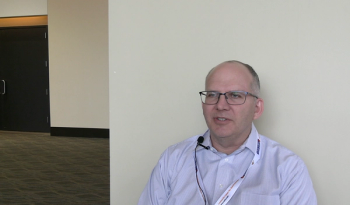
Raman Spectroscopy of Graphene-Based Materials
Raman spectroscopy is a versatile tool to identify and characterize the chemical and physical properties of graphene-based materials (1-4). Raman spectroscopy provides information on graphene structures for fundamental research and for practical device fabrication. Raman scattering demonstrates the first- and second-order modes in intrinsic graphene as well as the shear, layer-breathing, and the G and 2D modes of multilayer graphene. Professor Ping-Heng Tan from the State Key Laboratory of Superlattices and Microstructures at the Institute of Semiconductors at the Chinese Academy of Sciences is carrying out new research to advance the use of Raman analysis of these materials. We recently interviewed Tan about this work.
Raman spectroscopy is a versatile tool to identify and characterize the chemical and physical properties of graphene-based materials (1-4). Raman spectroscopy provides information on graphene structures for fundamental research and for practical device fabrication. Raman scattering demonstrates the first- and second-order modes in intrinsic graphene as well as the shear, layer-breathing, and the G and 2D modes of multilayer graphene. Professor Ping-Heng Tan from the State Key Laboratory of Superlattices and Microstructures at the Institute of Semiconductors at the Chinese Academy of Sciences is carrying out new research to advance the use of Raman analysis of these materials. We recently interviewed Tan about this work.
You have described Raman techniques to determine the number of graphene layers, to probe resonance Raman spectra of monolayer and multilayer graphenes, and to obtain Raman images of graphene-based materials. What are the greatest benefits of applying Raman spectroscopy to investigate graphenes? How does Raman compare to other methods for this application?
Raman spectroscopy is a fast, nondestructive, and versatile tool for the characterization of the lattice structure and the electronic, optical, and phonon properties of graphene-based materials. Raman spectra of all graphene-based materials show a few prominent features (D, G and 2D modes) regardless of the final structure. However, the positions, line shapes and intensities of these peaks give abundant useful information for the investigation of the structures and electronic properties of graphene-based materials. In comparison to other methods, Raman spectroscopy can give more information without the additional treatments or damage to the sample and with much less time and cost.
Would you briefly explain the theory behind how Raman measurements provide detailed information for investigation of the fundamental properties of graphene, including the states, effects, and mechanisms of graphene?
The first-order Raman scattering in a crystal is a three-step process, including the generation of the photo-excited electron and hole, scattering of the excited electron or hole by the phonon phenomena, and the recombination of the electron and hole. The phonons involved reflect the corresponding fundamental properties. For example, the single-axis strain of graphene can be revealing by the splitting of the E2g phonon (G mode), and the frequency of the interlayer shear (C) mode, giving information on the number of graphene layers as well as the interlayer coupling strength. Moreover, it’s obvious that the intensities of the Raman modes are related to the optical properties of graphene. By obtaining the resonance Raman spectra, the optical transition probability of graphene-based materials can be obtained. For example, the twisted bilayer graphene has a twist-angle dependent Van Hove singularity in the joint density of state, which leads to twist-angle dependent optical transition energies and can be investigated by multi-wavelength Raman spectroscopy. Moreover, due to the unique linear band structure, the second-order Raman scattering (involving two phonons, represented by the 2D mode) is easily observed in graphene-based materials, which is enhanced by a double resonance Raman scattering process. This excitation-wavelength dependent mode allows one to detect the phonon dispersion, electron-phonon coupling, and band structure of graphene-based materials.
Why are graphene-based materials important?
Graphene is a truly two-dimensional system, consisting of sp2 carbon hexagonal networks with strong covalent bonds. Multilayer graphene can be stacked layer by layer in a Bernal or rhombohedral way through van der Waals coupling. High-quality monolayer graphene and multilayer graphene can be produced by several methods, such as micromechanical exfoliation, chemical vapor deposition, and epitaxial growth from the silicon carbide (SiC) surface. Other artificial fabrication routes for production, such as the reduction of a graphene oxide solution and organic synthesis, tend to introduce defects into the graphene, such as vacancies and dislocations, as well as exposing the graphene to oxidation, hydrogenation, fluorination, and other chemical functionalization. Graphene can also be decomposed into one-dimensional and zero-dimensional forms, such as graphene nanoribbons and nanographene. All these materials with various dimensions are derived from graphene and can be termed graphene-based materials.
The remarkable properties of graphene and graphene-based materials, including their high carrier mobility (near ballistic transport), high thermal conductivity, unique optical and mechanical properties, and high specific surface area, make them promising materials for high-frequency nanoelectronics, micro- and nanomechanical systems, thin-film transistors, transparent and conductive composites and electrodes, batteries and supercapacitors with high charging speeds, highly sensitive chemical sensors, flexible and printable optoelectronics, and photonics.
In addition, recent research studies have advanced to investigate vertical van der Waals heterostructures because they can be formed by vertically stacking various two-dimensional materials by van der Waals forces but without any constraints of lattice matching and fabrication compatibility, offering huge opportunities for the design of new functionalities. Graphene and multilayer graphene are the essential building blocks for van der Waals heterostructures as electrodes in various high-performance devices, such as field-effect tunneling transistors, logic transistors, photovoltaics, and memory devices.
What is the potential for Raman spectroscopy to be used routinely for characterizing graphene materials in a manufacturing or production environment?
For the large-scale characterization of graphene materials in industry, Raman spectroscopy has several advantages, including short measurement time, low cost, lower training requirements compared to other techniques, and very importantly, the nondestructive nature of the technique. The relatively simple features of the Raman spectra in graphene-based materials make them quite easy to interpret by an engineer with some limited training. The cost of the Raman measurement is becoming lower and lower with the development of Raman instrumentation, including portable systems. It just takes a few minutes to obtain a state-of-art Raman spectrum of graphene-based materials. And the Raman measurement would not affect the quality of the materials after measurement by gently controlling the incident laser power.
What recent advances in Raman instrumentation, software, or sampling methods have you been most active in over the recent past?
Recently, I have been active in pushing the detection limit of the low frequency Raman modes in a single-monochromator Raman system. Our target is to probe the Raman modes with the frequency as low as possible. As we know, a well-aligned triple grating spectrometer can give a low frequency limit down to 5 cm-1, but with a low detection efficiency. In our previous work, we obtained a frequency limit down to 2.0 cm-1 by a single-monochromator Raman system coupled with volume-Bragg-grating-based notch filters (5), and achieved a frequency limit down to 10 cm-1 by a single-monochromator Raman system with long pass edge filters (6). Those filter-based techniques to detect low frequency Raman modes are much higher in efficiency than a triple grating spectrometer. We have also developed a tunable single-monochromator Raman system based on the supercontinuum laser and tunable filters, showing its potential application for resonant Raman profile measurements (7). We also devote ourselves to updating a single grating spectrometer with our homemade micro-Raman module into a high-throughput confocal Raman system. The home-made micro-Raman module can connect two single grating spectrometers to obtain a very broad photoluminescence spectrum in a single capture and a Raman spectrum with high spectral resolution. You can see a demonstration of this on the website
What have been your greatest challenges in scientific discovery over your career? What is your general approach to problem solving in your scientific work?
As a physicist studying Raman spectroscopy, the greatest challenge in scientific discovery is always how to obtain the intrinsic Raman spectra and how to understand them properly. That challenge arises frequently when you are exploring the fundamental properties of new materials by Raman spectroscopy. Fortunately, with the development of theoretical approaches, it’s becoming easier to understand the measured Raman results quickly and accurately. As an experimental physicist, I always benefit a lot by collaborating with many theoretical scientists.
What are some major gaps in knowledge for Raman technology that you would like to see more research and development time devoted to?
I have been working on Raman spectroscopy for over 20 years. At the beginning, Raman technology was used as a tool by a few Raman experts in physics and chemistry to investigate the lattice and molecular dynamics of molecules and their other related properties. The Raman technique has developed exponentially in past 15 years, leading to many non-experts wishing to enter this field. Now, Raman spectroscopy has become a standard and routine technique to identify and characterize many materials, both at the laboratory and mass-production scale. However, some users may just know how to measure Raman spectra simply by using a commercial Raman system, but do not know the real physical meaning behind the spectra they measure. Thus, as a physicist of Raman spectroscopy, I would like to appeal to and help more researchers to put their sights on the depths of this area, which will be helpful for the development of this field.
What do you anticipate is your next major area of research or application in this field?
We are really interested in characterizing the two-dimensional materials (especially graphene-based materials) and related van der Waals heterostructures in an operating device in situ. It would be helpful for us to understand the working mechanism of the device and to reveal new physical phenomena of various materials and related devices.
For those having greater interest in this topic, what reference papers or books would you recommend they obtain to read or study?
In the past decade, the attention to this field keeps growing. The following review papers or books can be recommended for non-experts wishing to enter the field:
- L.M. Malard, M.A.A. Pimenta, G. Dresselhaus, and M.S. Dresselhaus, Raman spectroscopy in graphene, Physics Reports473(5-6), 51-87 (2009).
- A. Jorio, M.S. Dresselhaus, S. Riichiro, G. Dresselhaus, Raman Spectroscopy in Graphene Related Systems (Wiley-VCH, 2011).
- A.C. Ferrari and D.M. Basko, Raman spectroscopy as a versatile tool for studying the properties of graphene, Nature Nanotechnology8(4), 235 (2013).
- J.B. Wu, M.L. Lin, X. Cong, H.N. Liu, and P.H. Tan, Raman spectroscopy of graphene-based materials and its applications in related devices, Chemical Society Reviews47(5), 1822-1873 (2018).
- P.-H. Tan, ed., Raman Spectroscopy of Two-Dimensional Materials (Springer Nature Singapore Pte Ltd., 2019). DOI: 10.1007/978-981-13-1828-3.
References a through c present the fundamental understanding of the use of Raman spectroscopy in graphene materials, and references d through e give a more complete understanding and updates on newer progress in the analysis of graphene-based materials and other two-dimensional materials.
References
- J.B. Wu, M.L. Lin, X. Cong, H.N. Liu, and P.H. Tan, Raman spectroscopy of graphene-based materials and its applications in related devices, Chemical Society Reviews47(5), 1822–1873 (2018).
- P.-H. Tan, ed., Raman Spectroscopy of Two-Dimensional Materials (Springer Nature Singapore Pte Ltd., 2019). DOI: 10.1007/978-981-13-1828-3.
- M.L. Lin and P.H. Tan, Ultralow-Frequency Raman Spectroscopy of Two-dimensional Materials. In Raman Spectroscopy of Two-Dimensional Materials (Springer, Singapore, 2019), pp. 203–230.
- J.B. Wu, M.L. Lin, and P.H. Tan, “Raman Spectroscopy of Monolayer and Multilayer Graphenes,” in Raman Spectroscopy of Two-Dimensional Materials (Springer, Singapore, 2019), pp. 1–27.
- X.L. Liu, P. H. Tan et. al., Filter-based ultralow-frequency Raman measurement down to 2 cm−1 for fast Brillouin spectroscopy measurement, Review of Scientific Instruments88(5), 053110 (2017).
- M.L. Lin, P.H. Tan et. al., Ultralow-frequency Raman system down to 10 cm−1 with long pass edge filters and its application to the interface coupling in t(2+2)LGs, Review of Scientific Instruments87(5), 053122 (2016).
- X. L. Liu, H.-N. Liu, and P.-H. Tan, A tunable single-monochromator Raman system based on the supercontinuum laser and tunable filters for resonant Raman profile measurements, Review of Scientific Instruments88(8), 083114 (2017).
Ping-Heng Tan is a Professor in the State Key Laboratory of Superlattices and Microstructures at the Institute of Semiconductors, which is part of the Chinese Academy of Sciences. He obtained a BS (1996) in Physics from Peking University and a PhD (2001) from the Institute of Semiconductors, of the Chinese Academy of Sciences. He worked at Walter Schottky Institut at the Technische Universitaet Muenchen, in Munich, Germany, as a postdoctoral research associate from 2001 to 2003. He was a KC-Wong Royal Society Fellow at Cambridge University from 2006 to 2007. His current research is on two-dimensional materials and related van der Waals heterostructures and novel low-dimensional semiconductor optoelectronic materials. He has published 190 peer-reviewed papers, which have been cited more than 12,000 times (Google Scholar). He was selected as 2018 highly cited researcher by Web of Science, Clarivate Analytics. He had been invited to deliver more than 100 invited, keynote, and plenary talks at national and international conferences. Besides being a member of the International Steering Committee of ICORS, Ping-Hen Tan is currently also the chairperson of the Chinese Light Scattering Committee. In addition, he is an Advisory Board member of the Journal of Raman Spectroscopy and member of editorial boards of journals such as npj 2D Materials and Applications, Superconductor Science and Technology, Journal of Semiconductors and the Journal of Light Scattering.
Newsletter
Get essential updates on the latest spectroscopy technologies, regulatory standards, and best practices—subscribe today to Spectroscopy.





